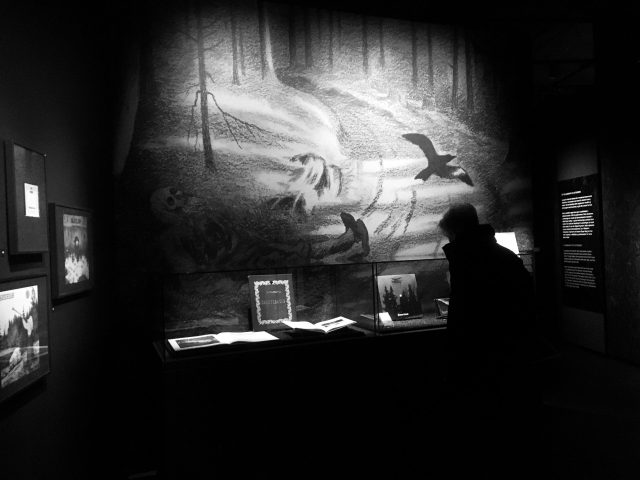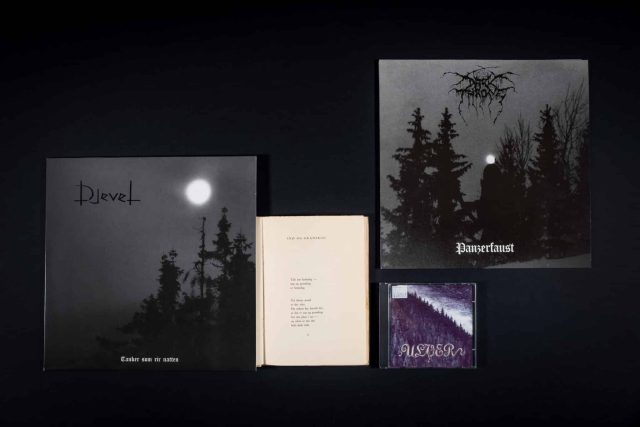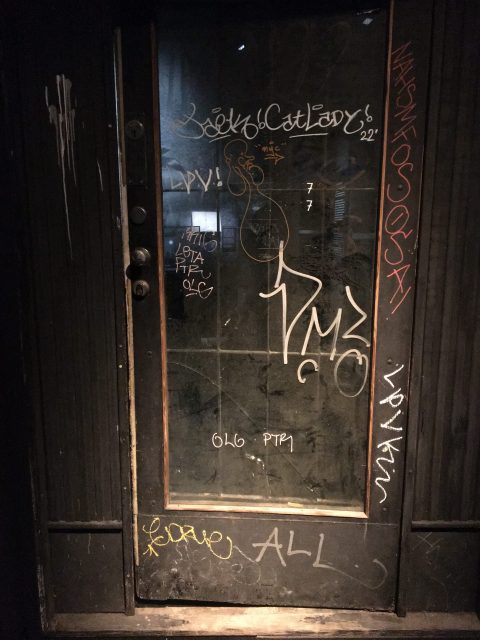A new exhibition at Norway’s National Library in Oslo aims to track the rise and rise of Norwegian black metal music, from a little-understood subculture of small-town misfits to a cultural phenomenon commanding massive global attention. It suggests that black metal has come a long way from its occult roots, often following classic Norwegian artists in connecting with Norway’s forests and the melancholy moods they can inspire.

The exhibition is called Dårlig stemning/Bad Vibes: Sonic emotions of Norwegian Black Metal, and it’s presented in both Norwegian and English, given the international interest in the genre. It comes less than a year after Oslo’s new MUNCH museum unveiled a landmark exhibition of 13 masterpieces by Edvard Munch and black metal band Satyricon’s musical interpretation of them.
Bad Vibes opened in late March, just in time for the annual Inferno festival that brings legions of black metal fans from all over the world to Oslo during the Easter holidays.
They have a lot to see and hear at the new exhibition. It charts the sources of inspiration behind this uniquely Norwegian expression of art: legends and fairy tales, authors and artists, Nordic mythology, Viking history, pagan rites, religious texts and symbols. In addition comes the strong Norwegian passion for the perfect solitude found in frozen forests.
In a darkened wing of the historic library at Oslo’s popular Solli Plass, visitors enter a “forest room” wallpapered with skinny corpse-white birch trunks in the dead of night. Creepy voices whisper lines from selected songs by prominent bands like Darkthrone and Ulver (Wolves). The next room is dedicated to the late Norwegian artist Theodor Kittelsen’s depictions of nature, animals, trolls and the plague that ravaged Norway in 1349. The plague is called Svartedauen in Norwegian (literally “The Black Death”), and the collection shows ways black metal artists have used Kittelsen’s works for inspiration and cover art.

Visitors are even invited to walk through “the door to Hell.” The squeaky, graffiti-scribbled door is one of numerous unique artifacts on display; it led the way into an Oslo record store in the early 1990s that was called Helvete (Hell). The store, located in one of Oslo’s less glamorous neighborhoods, ranks as the epicenter of Norwegian black metal in its earliest, chaotic years and was an important gathering spot for its long-haired, leather-clad devotees. Its basement served as the office for record company Deathlike Silence, and its owner was Øystein “Euronymus” Aarseth, guitarist with the pioneering and influential black metal band Mayhem. In 1993 Aarseth was stabbed to death by fellow band member Varg Vikernes, who was later convicted not only for that grisly murder, but also for burning down historic churches including one of Norway’s iconic stave churches and Oslo’s Holmenkollen Chapel.
Such crimes, combined with a carefully crafted death cult and “Satanist” image, gave black metal a seriously bad reputation that still lingers. Most black metallers are not happy about it. The Bad Vibes exhibit makes it clear that most of them were into music, not murder or burning churches.

“Many of those who have played black metal music are tired of murder and church burnings blocking the way for everything they do,” curator Thomas Alkärr told newspaper Dagsavisen. He’s a former journalist at state broadcaster NRK, where he authored and co-directed the channel’s six-part doumentary on Norwegian black metal, entitled Helvete (Hell).
“A small minority made those headlines,” Alkärr said. “For the others, the music was enough.”
‘Small town phenomenon’
He told newspaper Klassekampen that none of the pioneering black metal bands sprang out of Norway’s largest cities: “It was a phenomenon of the small towns, the suburbs and the villages, communities close to the forest that became a symbol of freedom, of danger, and of the wilderness beyond organized society with its rules and regulations.”
It was also a counter-culture of outsiders getting together, mostly young men like Jon “Metalion” Kristiansen.
“I was born in Sarpsborg, a town where you either did sport or became a junkie. I had to create my own world in a world I didn’t like,” Kristiansen wrote in an autobiographic text handed out in a part of the exhibition dedicated to his handmade and widely read fan magazine Slayer Mag, established 1985. Kristiansen never played in a band, but was instrumental in developing a network of like-minded people in Norway and, eventually, all over the world. They would write letters to each other and swap cassette tapes with new music. It was even customary to send the stamps back for re-use, to keep costs down. Krisitansen says he’s proud that Mayhem dedicated its Deathcrush album to him. It’s on display in all its shocking pink glory – it was supposed to be blood-red, but a production error made the album cover so ugly that the band turned into an advantage.
Significant cultural export
Quite a few of the items on display, including letters, newspaper clippings, album covers, master tapes and more, were already available in the vast collections of the National Library. The library is tasked with collecting all documents published in Norway and making them available to the public. The cover of one iconic black metal album – Darkthrone‘s 1993 release A Blaze in the Northern Sky – was included in the library’s permanent exhibit of Norway’s cultural history in 2020. By then, Norwegian black metal had become a significant cultural export, prompting Norway’s Foreign Ministry to train its diplomats to promote it on the world market along with salmon and oil.
“There may be some who reckon that this isn’t right, that black metal is rendered harmless (…),” Alkärr told Klassekampen. “But it’s been 30 years since the chaos era of Norwegian black metal. Most of those we have talked to are happy and proud that their creative work is considered so significant.”
The exhibition will run through September 16. It’s free of charge and open most days and evenings.
NewsinEnglish.no/Morten Møst

